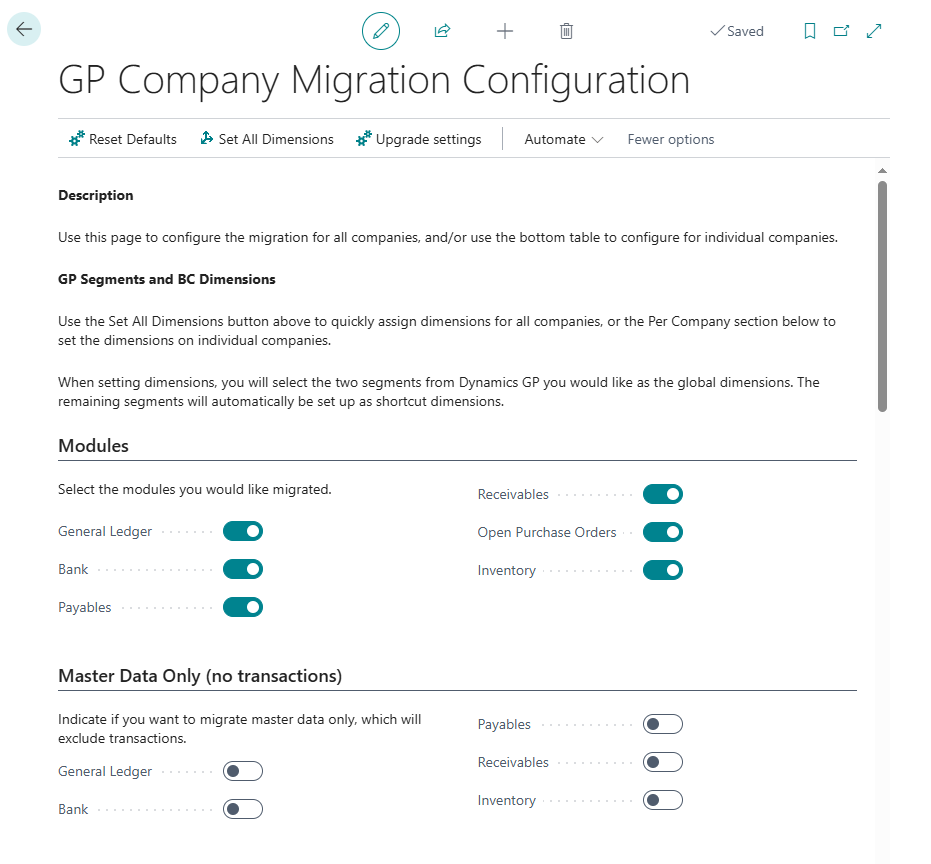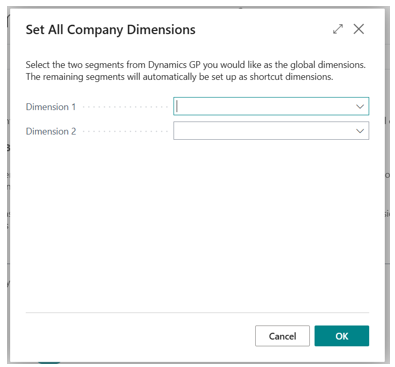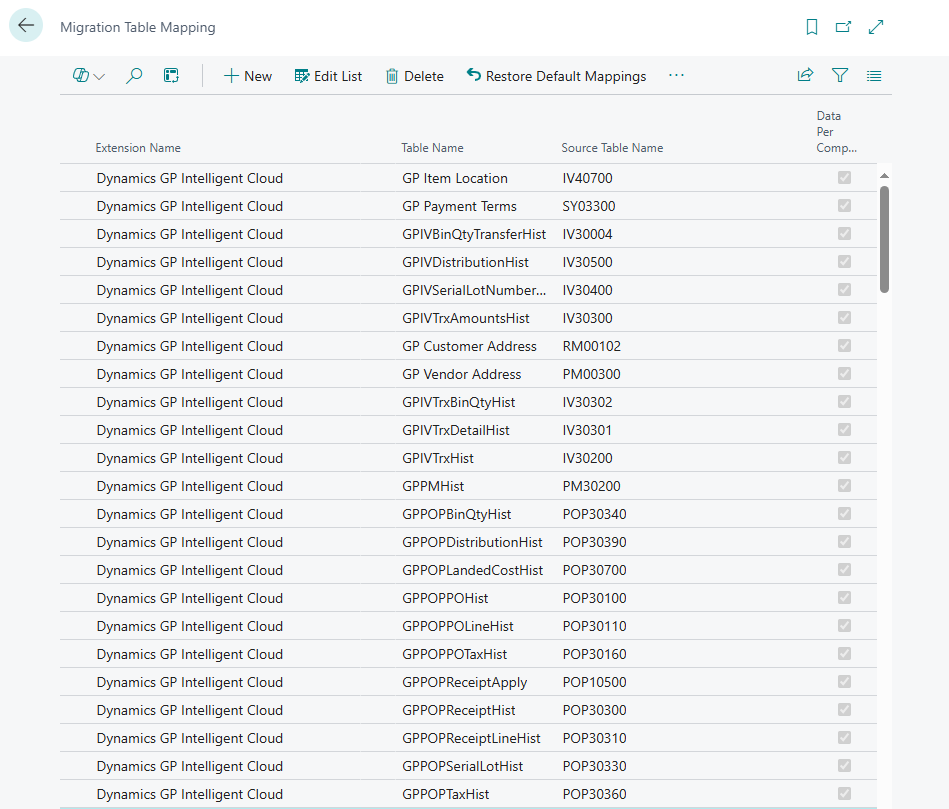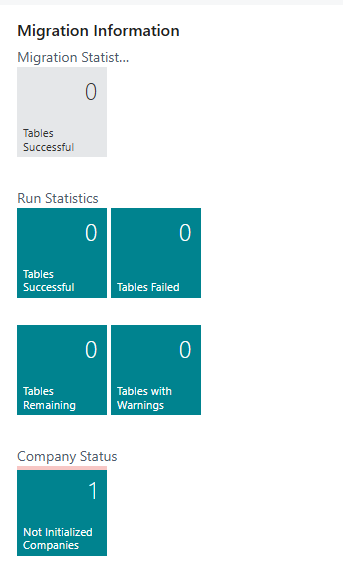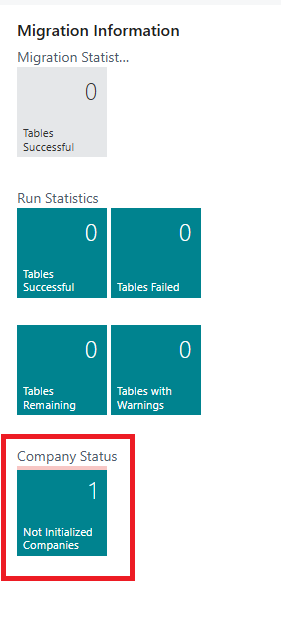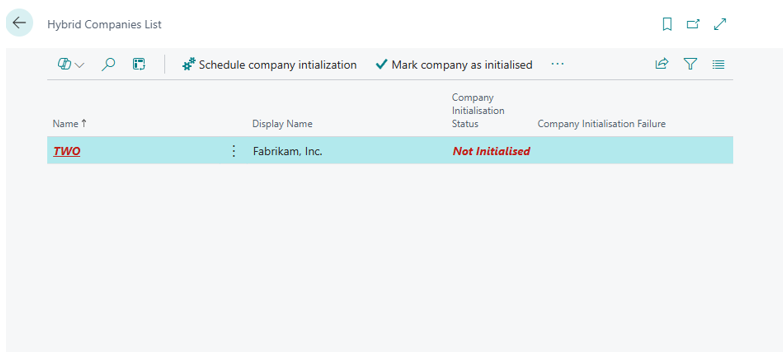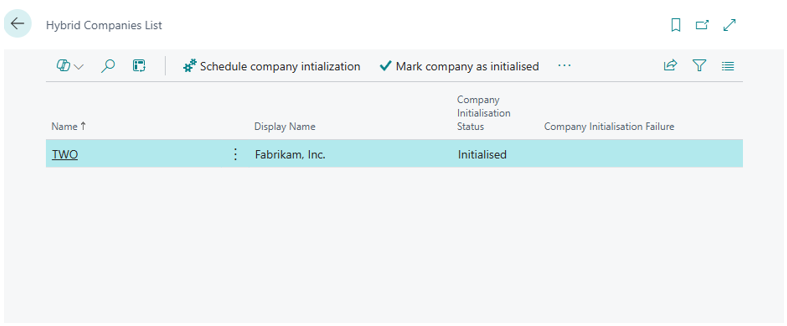Guidelines for Partners
Migrating from Dynamics GP to Dynamics 365 Business Central SaaS involves several steps and considerations to ensure a smooth transition. Below are the Dynamics GP to Dynamics Business Central Cloud migration guidelines.
Migrate on-premises GP data to Business Central online overview – Business Central | Microsoft Learn
1. Requirements for Dynamics GP to Dynamics 365 Business Central SaaS migration
Migration from Dynamics GP to Dynamics 365 Business Central SaaS is only possible if the Dynamics GP version is 2015 or later and the SQL Server version is 2012 or later. Therefore, if a client has an older version of GP or SQL, they must first upgrade to the required versions before migration.
Migration involves several preparatory steps and requirements the client must fulfill before migrating.
Preliminary Requirements:
1..Upgrade GP and SQL Versions:
- Ensure that the Dynamics GP version is 2015 or later.
- Ensure that the SQL Server version is 2012 or later.
2. Database Compatibility Level:
- The SQL database compatibility level must be set to 130 or higher.
3. Prepare the Dynamics GP Environment:
- Ensure all batches are posted to avoid incomplete data migration.
- Ensure the MAIN account segment is defined in the General Ledger Setup.
- Turn on ACTIVITY tracking for all companies.
- Clear errant data using the check-links function.
- Ensure no inventory items have codes longer than 20 characters.
- Reconcile all sub-ledger balances with the General Ledger to ensure data accuracy.
- Set up all default posting accounts to ensure seamless posting after migration.
- Verify that all periods are closed up to the open fiscal year.
- Reconcile all General Ledger years for consistency.
Cloud Migration Prerequisites for Dynamics GP – Business Central | Microsoft Learn
2. Dynamics GP to Dynamics Business Central Migration Process
Step 1 – Create a login to access your SQL server from the outside
Run SQL Management Studio and create a new login for the SQL server that your database is on. The login should have the “SQL Server authentication” type and db_owner membership for the master, model, msdb, and tempdb databases you are migrating.
Step 2 – Make your SQL server accessible from the outside
1) Make sure that your SQL server authentication is set to SQL Server and Windows authentication.
2) Make sure that a remote connection to your SQL server is allowed.
3) Make sure that your database compatibility level is at least 130.
4) Make sure that Tracking is enabled on your database.
Step 3 – Prepare for custom data migration
You may skip this step if you do not require custom data from Dynamics GP.
Otherwise, identify which modifications you want to move.
Custom Tables:
If custom tables are required, create each custom table to align with the corresponding table in the Dynamics GP SQL Database. Ensure that all fields have the same names and types.
Step 4 – Import custom extensions
Now, all required custom extensions need to be imported. First, we have to prepare a target extension for the cloud:
1. Go to the app.json file and change the “target” value to “Cloud” -> “target”: “Cloud”
2. Press F1; in the text box, type “Generate permission” and select the first value to generate the current extension permissions file.
3. Build extension (CTRL + SHIFT + B)
Go to page “Extension Management” -> “Manage” -> “Upload Extension”
Select target extension *.app file and then click on the “Deploy” button.
Step 5 –Set up Microsoft Integration runtime service
Download and install the Microsoft Integration runtime service. You can find the installation on Google by typing “Microsoft Integration runtime service download.”
Leave it for now—this software will be needed later. It will connect your server (where the Dynamics GP database is) to the SaaS environment.
Step 6 –Set up Cloud Migration
Go to your SaaS environment and find the Assisted Setup page:
Choose Set up Cloud Migration:
Select Dynamics GP.
Now, connect your server and SaaS environment. For SQL Connection String, use the template shown when you click on the words “SQL Connection String”:
Server=myServerName\myInstanceName;Database=myDataBase;User Id=myUsername;Password=myPassword;
If you are setting up Cloud Migration for the first time, leave the “Integration Runtime Name” field empty. You will need to create a new integration runtime.
Copy the provided Authentication Key and paste it into the Integration Runtime service window. Press Register.
Once the SaaS environment is connected to your Dynamics GP database, select companies to migrate.
After you select companies to migrate, you should see this window, where you can Select Dynamics GP modules to be migrated.
Before closing this window, press the action “Set All Dimensions”, set your dimensions, and press OK.
Close page ”GP Company Migration Initialization”.
Run cloud migration setup for Dynamics GP migration – Business Central | Microsoft Learn
Configure Dynamics GP company migration – Business Central | Microsoft Learn
Step 7 –Run Cloud Migration
Before running the migration, you need to open the “Manage Custom Tables” page located in the Cloud Migration Management Page to map custom tables for migration.
Table Name: Table name in AL
Source Table Name: Table name in SQL.
Fill this with your custom and temporary table names and close the page.
Define migration table mappings – Business Central | Microsoft Learn
In Cloud Migration Management page where data migration can be started manually, migration schedules can be managed, etc. (Data migration process can be scheduled for later)
In order to start data migration, press the Run Migration Now action (It can be that the company initialization process is still running in the background, so you have to wait for it to finish and Run Migration Now again):
You can press the Refresh Status action to check the status of your data migration (In Progress, Failed, Completed). Once your data migration is completed – you can check all the statistics in the fact box on the right:
After data replication is completed, the data upgrade should start automatically.
So, it is important to review Tables Failed if there are any. Tables not Migrated shows the list of standard tables that are not included in cloud migration.
Data replication overview – Business Central | Microsoft Learn
Upgrade data for Dynamics GP cloud migration – Business Central | Microsoft Learn
Step 8 –Initialize companies
Company initialization should be performed after data migration is successfully completed. Click on Not Initialized Companies if there are any:
Click Schedule company initialization action:
That’s it – your migration from Dynamics GP to Dynamics Business Central Cloud is ready!
Complete cloud migration for Dynamics GP – Business Central | Microsoft Learn
Conclusion
In summary, migrating from Dynamics GP to Dynamics 365 Business Central SaaS requires careful planning and execution. Simplanova specializes in providing these migration services to ensure a smooth and efficient process. For more information, check the Simplanova Dynamics GP to BC Migration Service page or fill out the online form below to get the fixed-price proposal instantly for your project.
Dynamics GP to BC Migration Calculator
Fill in the form below with your customer Dynamics GP solution data, and you will instantly receive the fixed price proposal by email. If you have any questions, email us at [email protected]

